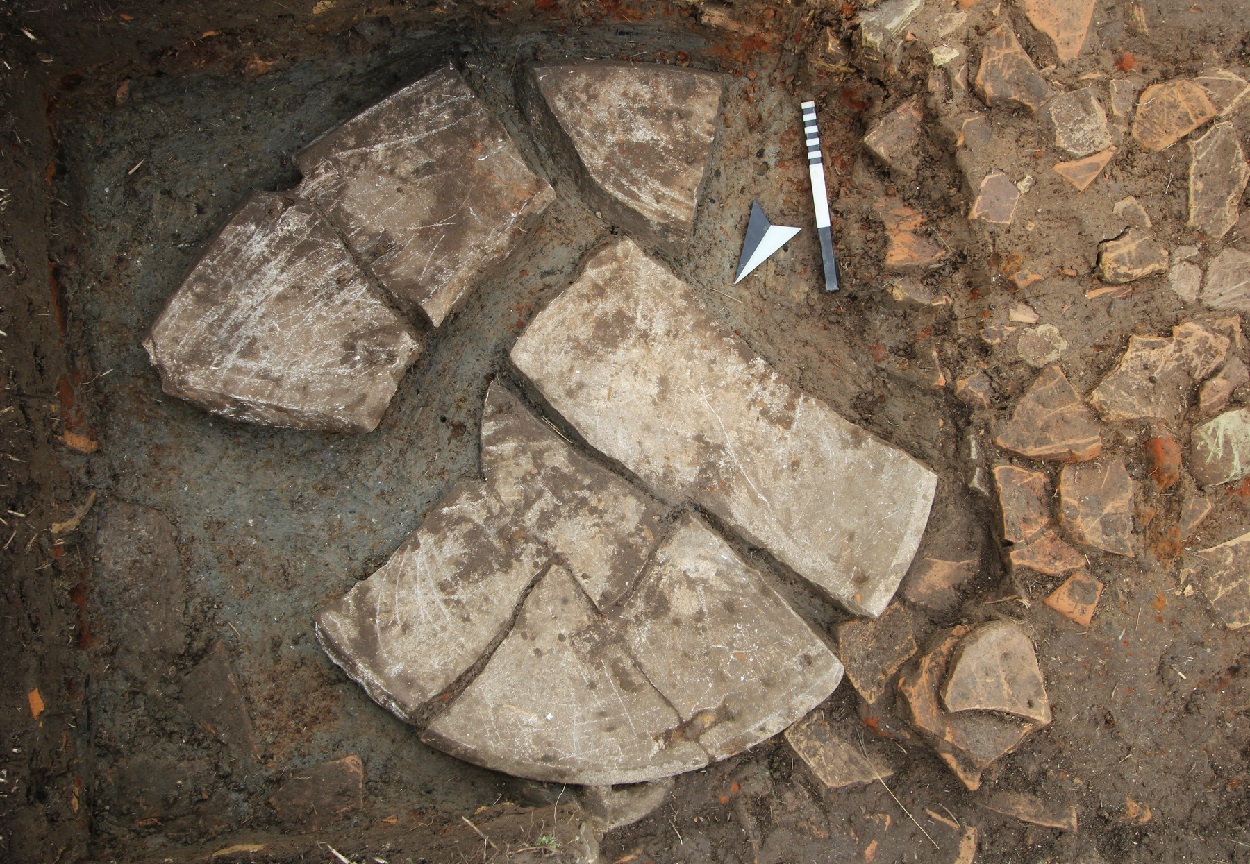Archaeologists have completed the latest season of excavations at Kleidis Samikos, part of a five-year research initiative (2022-2026) in the Kaiafas area of the Peloponnese, Southwestern Greece.
The project is a joint collaboration between the Ephorate of Antiquities of Ilia and the Austrian Archaeological Institute of the Austrian Academy of Sciences, under the leadership of Dr. Birgitta Eder and Dr. Erofilis-Iridas Kollias.
Excavations have revealed further traces of a temple-like structure that measures 28 metres in length, and with a width of 9.5 metres.
Archaeologists suggest that the structure dates from around the 6th century BC, which appears to have been partially deconstructed around 300 BC and renovated with new floor tiles above the original ground level before being abandoned.
Within the interior are two large spaces, each containing two central columns, with additional columns positioned in the structure’s two front pediments.
Within the second room, archaeologists found fragments of an archaic marble basin that was likely used for purification rituals. By combining with previous fragments first uncovered in 2022, the researchers hope to partially restore the basin which will measure 1 metre in diameter once complete.

Another key discovery this season is a copper plaque that would have been displayed on the temple wall. On the plaque are traces of an inscription, which using imaging diagnostics will be enhanced and translated at the Ephorate of Antiquities of Ilia.
Additionally, a large wall has been excavated which is thought to mark the northern boundary of the temple enclosure. According to a press statement issued by the Ministry of Culture: ” In the coming years, the scientific team intends to continue the research in order to identify more evidence about the extent and form of the sanctuary, and the topography of the area.”
Header Image Credit : Ministry of Culture
Sources : Ministry of Culture







